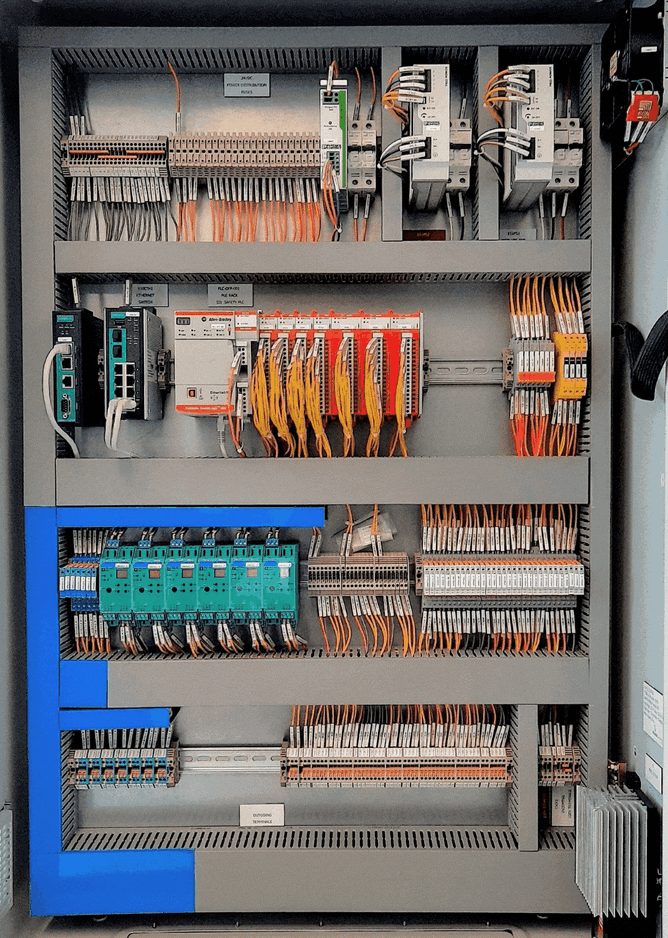Our deep dive into PLCs
A Programmable Logic Controller is an industrial computer designed to manage and control the movements of various automated equipment.
It performs its function by activating and deactivating electrical devices on each machine, including signal beacons, relays, and motors.
Much like a conductor guiding an orchestra, a PLC directs automated handling equipment—such as stacker cranes and conveyors—ensuring that operations run smoothly and effectively
It’s built to endure tough environments and perform real-time control tasks. PLCs execute a range of functions, from basic on/off controls to intricate process management by being easily programmable and adaptable.
Why is the PLC an essential tool for manufacturing environments?
Manufacturers today face the challenge of managing increasingly complex production environments, where precision, speed, and adaptability are crucial. With rising demands and evolving technologies, having a system that can efficiently handle these complexities is essential. This is where the PLC shines.
Manufacturing environments often involve harsh conditions, including extreme temperatures, dust, and vibrations. PLCs are built to withstand these challenges.
Key Advantages of PLC's
PLCs respond to inputs and outputs within milliseconds, ensuring smooth and accurate machinery operation. They can be easily programmed and reconfigured to adapt to new processes and technologies, making them highly flexible.
Designed to withstand harsh industrial conditions, PLCs are reliable in demanding environments. By managing various systems from a single point, they enhance efficiency and simplify maintenance. Additionally, PLCs ensure high accuracy in controlling machinery, which improves product quality and reduces waste.
The Importance of Organized PLC Wiring
In the first image, cables are tangled and messy, which can lead to several issues:
Troubleshooting Difficulties: When wires are disorganized, identifying and fixing problems becomes time-consuming and error-prone.
Increased Risk of Damage: Cables that are not properly managed are more likely to get damaged, leading to potential failures and costly downtime.
Safety Hazards: Disorganized wiring can create safety risks for maintenance personnel, increasing the chance of accidental disconnections or short circuits.
In contrast, the second image shows a tidy, well-organized PLC setup:
Easier Maintenance: Organized wiring makes it much easier to trace connections, diagnose issues, and perform maintenance, reducing downtime.
Improved Reliability: Cables that are properly secured and labeled are less likely to experience wear and tear, leading to a more reliable system.
Enhanced Safety: A clean setup minimizes the risk of accidents and ensures that the system operates safely and efficiently.
Investing in a PLC enhances manufacturing efficiency by providing real-time control and precise automation of complex processes.
Its flexibility allows easy reprogramming for adapting to new production requirements, a PLC also centralizes control and high accuracy, improving product quality and reducing operational costs, leading to long-term savings.

